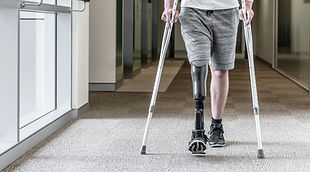

Tennis Elbow
Home Physio specializes in diagnosing and carefully treating Tennis Elbow while making sure each patient is fully informed throughout the process. Serving the Central, West & North London , Home Physio is known for delivering outstanding results while helping you minimize your personal investment and creating a suitable treatment plan for your needs.
Home / Conditions / Tennis Elbow

What is Tennis Elbow?
Tennis elbow is caused by a strain to tendons in the forearm. The tendons become inflamed where they join the bony part on the outside of your elbow joint. Any activity that involves gripping and twisting of the forearm can cause this type of strain – most cases aren’t actually related to tennis or any kind of exercise.
Golfer’s elbow is a similar condition that affects the inside of the elbow joint near the funny bone.
What are the symptoms?
Symptoms vary – you may have mild discomfort when you move your arm, or the pain may be bad enough to disturb your sleep.
The outside of your elbow will feel tender to the touch and there may be swelling.
You may also have pain further down your forearm.
Repetitive movements of the wrist will make the pain worse, especially if combined with a weight, for example if you’re lifting boxes.


What therapy can help?
Simple self-help treatments are probably all you’ll need to clear up your tennis elbow. Most cases will ease within about 2 weeks and you probably won’t need to see a doctor. The first thing you can do to help is to adapt any movements that may be causing your symptoms. For example, lift objects with your palms facing upwards and elbows bent.
Medication
Painkillers such as paracetamol and ibuprofen may help and you should use them if you need to. It’s important that you take them regularly and at the recommended dose to help you control the pain and allow you to continue exercising. Don’t wait until your pain is severe before taking painkillers. You can
also rub anti-inflammatory cream directly onto the painful area.
You shouldn’t take ibuprofen or aspirin if you’re pregnant or have asthma, indigestion or an ulcer until you’ve spoken to your doctor or pharmacist. Medication can have side-effects so you should read the label carefully and check with your pharmacist if you have any queries.
Steroid injections
If the pain hasn’t eased over 2–4 weeks you should see your doctor or specialist physiotherapist. They may suggest a steroid injection into the tender area. One injection is probably all you’ll need, though you may still need to rest your elbow for 2–3 weeks afterwards. There’s a slight possibility that the pain will become worse for a few hours after the injection, occasionally lasting for up to 48 hours.

Physiotherapy exercises
Physiotherapy
If your elbow pain is affecting your activity and is persisting, ask your GP about referral to a physiotherapist.
Physiotherapy can help you to manage pain and improve your strength and flexibility. A physiotherapist can provide a variety of treatments, help you understand your problem and get you back to your normal activities.
They may recommend an epicondylitis clasp, which can help reduce the strain on your elbow if you need to make repetitive hand and elbow movements, for example while you’re working.
Your pain should ease within 2 weeks and you should recover over approximately a 4–6 week period.
You should carry on with the exercises overleaf for at least 6–8 weeks after the pain disappears to help prevent symptoms returning.
Simple exercises
Wrist turn
Bend your elbow at a right angle and hold out your hand, palm up.
Turn your wrist slowly so that your palm is now facing down.
Hold for 5 seconds, and then slowly release.
Do 3 sets of 10 repetitions.
Wrist turn with weight
Repeat the exercise while holding a light weight (e.g. a tin of beans).
Wrist lift (palm up)
Bend your elbow at a right angle.
Hold a light weight (e.g. a tin of beans), palm up.
Bend your wrist slowly towards you.
Hold for 5 seconds, and then slowly release.
Do 3 sets of 10 repetitions.
Elbow bend
Stand up straight and lower your arm to one side.
Bend your arm slowly upwards so your hand is touching your shoulder.
Hold for 15–30 seconds.
Repeat 10 times.
Wrist flex
Keeping your arm straight in front with your palm facing down, gently bend your wrist down.
Use the opposite hand to press the stretching hand back towards your body and hold for 15–30 seconds.
Straighten your wrist.
Gently bend the stretching hand backwards and use the opposite hand to pull the fingers back.
Hold for 15–30 seconds. Do 3 sets with each wrist.





_edited.png)





